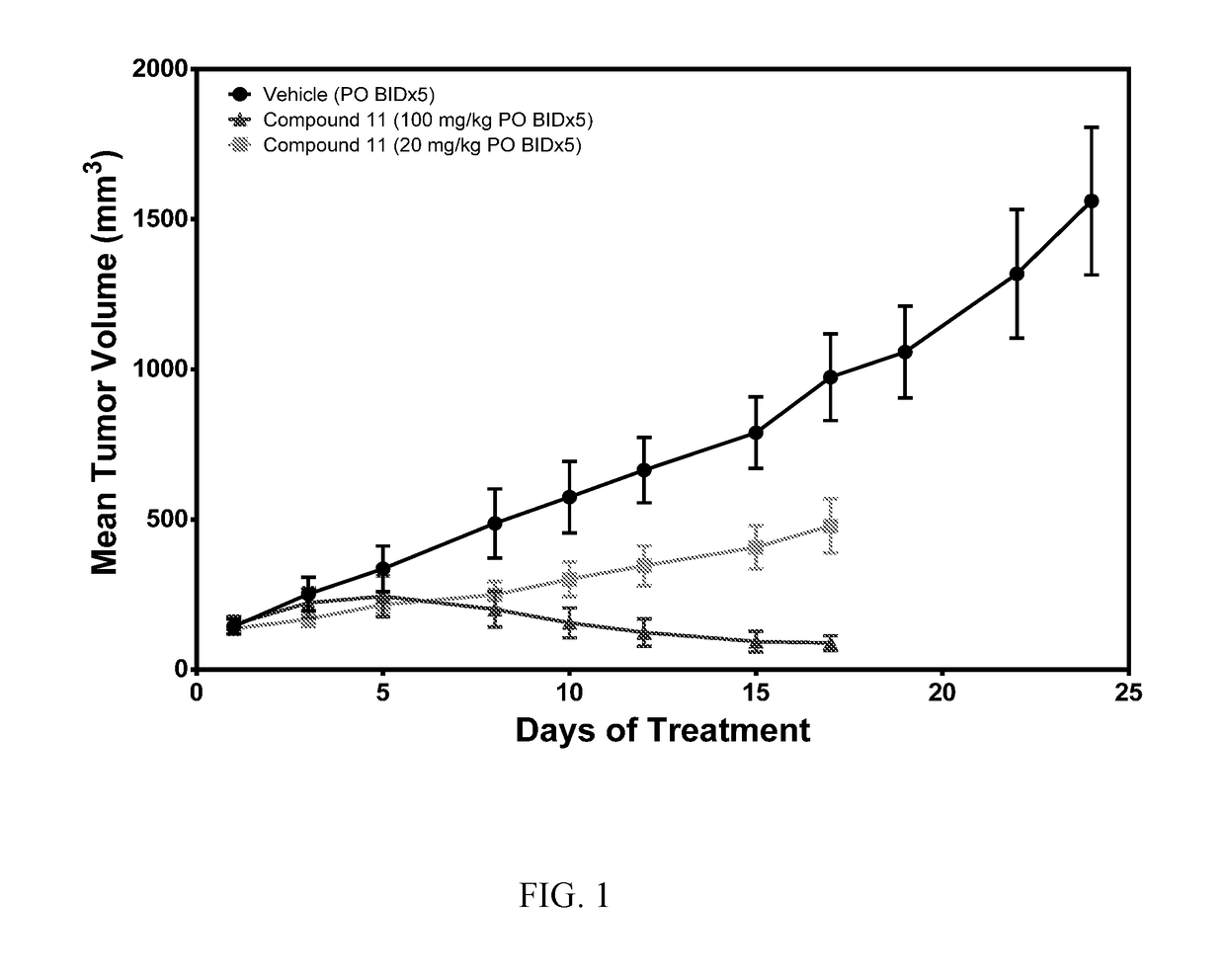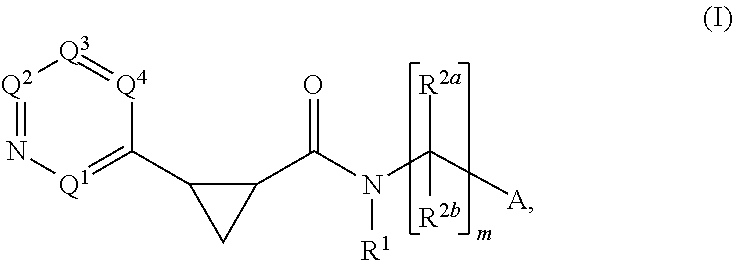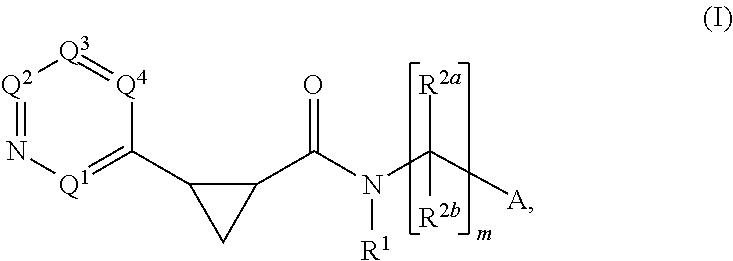Cyclopropylderivatives and their use as kinase inhibitors
a technology of cyclopropylderivatives and kinase inhibitors, which is applied in the field of substituted cyclopropylcontaining compounds, can solve the problems of insufficient existing treatment for cancer and remain a diseas
- Summary
- Abstract
- Description
- Claims
- Application Information
AI Technical Summary
Benefits of technology
Problems solved by technology
Method used
Image
Examples
example 1
Methods
Synthesis of Intermediate 3
[0409]
[0410]Synthesis of ethyl 2-(6-aminopyridin-3-yl)cyclopropanecarboxylate (2): Sodium hydride (40 mg, 1 mmol, 60% in mineral oil) was added to a stirred solution of trimethyl sulfoxonium iodide (396 mg, 1.72 mmol) in 5 mL of DMSO at 0° C. The mixture was stirred at 0° C. for one hour. (E)-ethyl 3-(6-aminopyridin-3-yl)acrylate (1; 192 mg, 1 mmol) in 2 mL of DMSO and 2 mL of THF was added to the reaction mixture. The mixture was stirred at room temperature for 18 h. 1N HCl aqueous solution was added until the mixture reached pH 6, and the mixture extracted with ethyl acetate (20 mL×3). The combined organic layers were washed with brine, dried over anhydrous Na2SO4, and concentrated under reduced pressure to give the crude product, which was purified by silica gel chromatography (30% EtOAc / petroleum ether) to give 50 mg of ethyl 2-(6-aminopyridin-3-yl)cyclopropanecarboxylate 2 as a yellow liquid. Yield: 25%. LCMS: m / z 207.2 [M+H]+, tR=1.55 min.
[041...
example 2
[0579]The MTT cell proliferation assay was used to study the cytotoxic properties of the compounds. The assay was performed according to the method described by Roche Molecular Biochemicals, with minor modifications. The assay is based on the cleavage of the tetrazolium salt, MTT, in the presence of an electron-coupling reagent. The water-insoluble formazan salt produced must be solubilized in an additional step. Cells grown in a 96-well tissue culture plate were incubated with the MTT solution for approximately 4 hours. After this incubation period, a water-insoluble formazan dye formed. After solubilization, the formazan dye was quantitated using a scanning multi-well spectrophotometer (ELISA reader). The absorbance revealed directly correlates to the cell number. The cells were seeded at 5,000-10,000 cells in each well of 96-well plate in 100 μL of fresh culture medium and were allowed to attach overnight. The stock solutions of the compounds were diluted in 10...
example 3
l Models
[0582]Molt-4 Xenograft in Mice Treatment with Compound K011
[0583]In this study, the impact of Compound K011 on tumor growth was tested using a Molt-4 T-ALL cancer xenograft model in SCID mice. MOLT 4 (CRL-1582) acute lymphoblastic leukemia cells were obtained from ATCC. These cells were grown in RPMI-1640 medium supplemented with 10% fetal bovine serum, 1% penicillin and streptomycin. Cells were sub-cultured by transferring floating cells to a new flask and trypsinizing adherent cells before subculturing at a ratio of 1:4. Molt-4 cells were harvested by centrifugation and counted using a hemocytometer. Cells were resuspended in phosphate-buffered saline (PBS) at 5×107 cells per mL. Cells were placed on ice and mixed with an equal volume of Matrigel (BD Biosciences CB-40234). This mixture was kept on ice and injected into the left flank of mice in a volume of 0.2 mL, equivalent to 5×106 cells per mouse. Twenty-four (24) CB-17 SCID mice were inoculated subcutaneously in the le...
PUM
 Login to View More
Login to View More Abstract
Description
Claims
Application Information
 Login to View More
Login to View More - R&D
- Intellectual Property
- Life Sciences
- Materials
- Tech Scout
- Unparalleled Data Quality
- Higher Quality Content
- 60% Fewer Hallucinations
Browse by: Latest US Patents, China's latest patents, Technical Efficacy Thesaurus, Application Domain, Technology Topic, Popular Technical Reports.
© 2025 PatSnap. All rights reserved.Legal|Privacy policy|Modern Slavery Act Transparency Statement|Sitemap|About US| Contact US: help@patsnap.com



